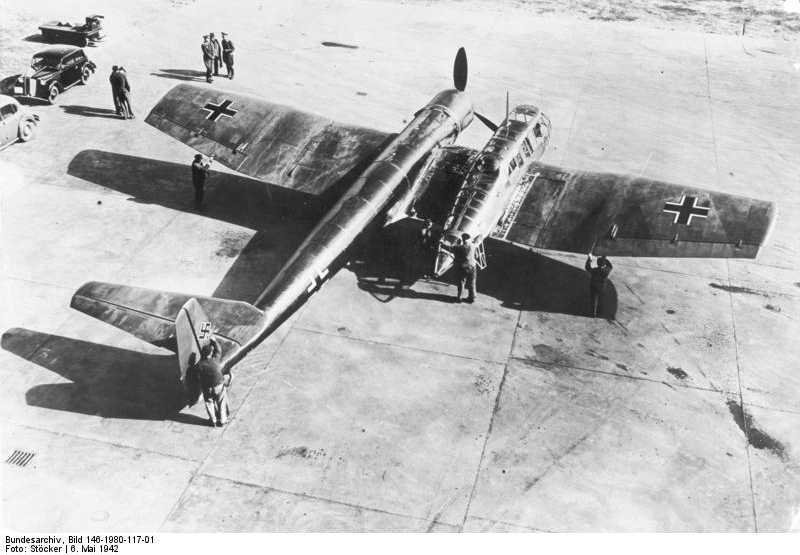On 25 February 1938 the German BV 141 of the company “Blom und Voss” made its first flight – one of the most unusual projects of its time. It was designed and created from 1937 as a reconnaissance aircraft. The original project struck the spectators’ imagination by the fact that it was asymmetric. The aircraft was equipped with a BMW 132 radial engine. It was mounted on the left fuselage that supported the rudder and the horizontal empennage at the stern. The fuselage on the right was shorter, in the rear it housed the tail gunner and in the front part the compartment for the pilot that enjoyed a wide visibility, essential for a reconnaissance aircraft.
It was an “exotic” project and despite the negative predictions, the plane flew and, in the opinion of evaluators, also very well. Other prototypes were ordered for further testing, but the unusual aircraft collided with a wall of distrust. Finally, the BMW 801 engines were also missing (more powerful than the original BMW 132), this engine was necessary for the mass production of the Focke-Wulf 190. As a result, the development of the aircraft was abandoned.
References
- warspot.ru
- Green, William (2010). Aircraft of the Third Reich. London: Aerospace. pp. 136–144
- Rys, Marek (2004). Blohm und Voss BV 141. Nowa Technika Wojskowa (New Military Technology) (in Polish). Warsaw: Magnum-X. pp. 55–64
Il 25 febbraio 1938 il tedesco BV 141 della compagnia “Blom und Voss” fece il suo primo volo – uno dei progetti più insoliti del suo tempo. Esso venne progettato e creato a partire dal 1937 come velivolo da ricognizione. L’originale progetto colpì l’immaginazione degli spettatori per il fatto che fosse asimmetrico. Il velivolo montava un motore radiale BMW 132. Esso era montato sulla fusoliera di sinistra che a poppa sosteneva timone e gli impennaggi orizzontali. La fusoliera di destra era più corta, nella parte posteriore essa alloggiava il mitragliere di coda e nella parte anteriore il vano per il pilota che godeva di una ampia visibilità, fondamentale per un aereo da ricognizione.
Si trattava di un progetto “esotico” e nonostante le previsioni negative, l’aereo volò e, secondo il parere di valutatori, anche molto bene. Vennero ordinati altri prototipi per ulteriori test, ma il velivolo insolito si scontrò contro un muro di diffidenza. Infine vennero anche a mancare i motori BMW 801 (più potenti rispetto agli originari BMW 132), che erano necessari per la produzione di massa del “Focke-Wulf» Fw 190. Di conseguenza lo sviluppo dell’aereo venne abbandonato.


